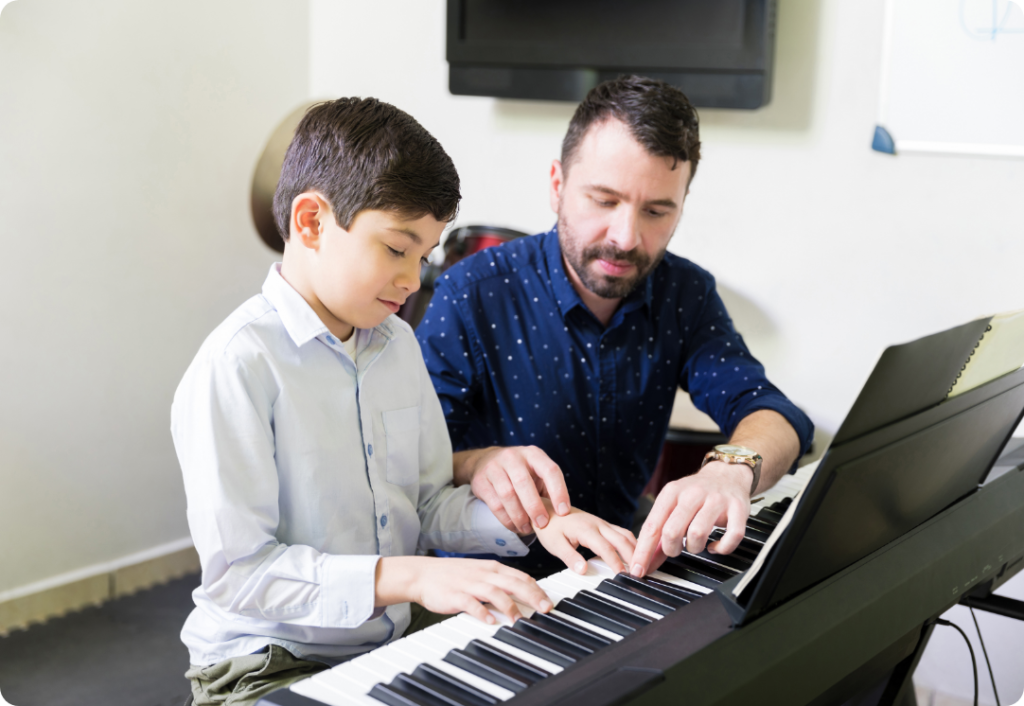Learning to Play Guitar: A Beginner’s Guide
Choose a good quality guitar
Classical guitars
Classical guitars, also known as Spanish guitars, are great for playing classical music or flamenco. They have nylon strings that are easier on beginners’ fingers. These guitars have a slightly larger body compared to electric guitars.
Acoustic guitars
Acoustic guitars are used in rock, country, folk, pop, and blues music. They have metal strings and are played with a pick. Acoustic guitars come in different designs like Jumbo and have a narrower fingerboard compared to classical guitars.
Electric guitars
Electric guitars are different in appearance and are usually used for metal and rock music. They need to be plugged into an amp to hear the full sound. Electric guitars are more expensive than acoustic and classical guitars.
Check the parameters and don’t forget the price
When choosing a guitar, consider the wood quality and processing. The type of wood affects the durability and sound of the instrument. Premium guitars provide better comfort and sound quality.
Try it first
Before buying a guitar, try playing one at a friend’s house or a store. This will help you decide on the type of guitar you prefer.
How to start playing the guitar: First, answer the basic questions
Consider the type of music you want to play, your budget, and reputable brands when choosing a guitar. Investing in a good quality guitar will make learning easier and faster.
How to learn to play the guitar: Step by step instructions
Step no. 1: Get familiar with the guitar
Learn the parts of the guitar like the bridge, strings, soundhole, fingerboard, frets, and tuning machines. Understanding these parts will help you play better.
Step no. 2: Get to know the chords
Learn how chords work and practice playing them to improve your guitar skills. Chords are essential for playing songs on the guitar.
A chord is a harmony of tones
Playing the guitar is all about creating harmonious sounds with your fingers. To play a chord, you need to press down on the strings with two fingers. Just like learning the alphabet or a poem, you have to remember the chords to play them correctly.
Checking your finger placement
The hand picking the strings will let you know if you’re holding the strings correctly on the fingerboard. If the sound doesn’t sound right, release the strings and try again. Once your fingers are in position, you can strum each string individually or all at once.
Alternate the chords
There are many different chords, like chord D or chord A, that are based on the basic ones. When playing chords, try not to focus on just one hand. Instead, think about the process as a whole and aim for harmony. It may seem difficult at first, but with practice, it will become easier.
Practice makes perfect
Once you know the chords, practice switching between them. Songs like “Wonderwall” by Oasis are great for practicing chord changes. Listen to the song and try to follow its rhythm. Beginner guitar notes can also help you learn.
Learning at home
Many people wonder if they can learn to play guitar online. The answer is yes! With the right instructions, tutorials, educational videos, or a guitar app, you can learn the basics and more advanced techniques from the comfort of your home.
High-quality accessories
As you progress in your guitar playing, consider investing in accessories like picks, guitar combos, effects, strings, covers, cases, stands, and straps. These accessories can enhance your playing experience and help you take your hobby to the next level.
Enjoy the process
Learning to play the guitar may seem challenging at first, but with dedication and practice, it becomes easier. Whether you’re playing an electric, classical, or acoustic guitar, enjoy the progress you make and have fun with your new musical skill. Who knows, you may even start your own home studio one day!


